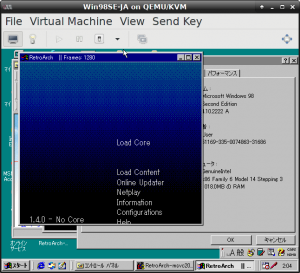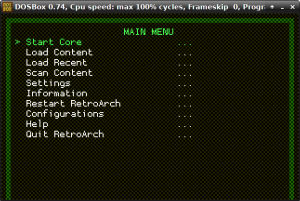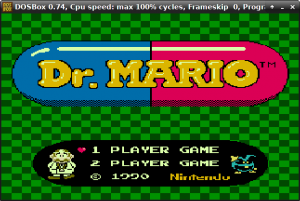RetroArch 1.5.0 has just been released!
Where to get it?
You can get the latest version here.
On Android, you can expect version 1.5.0 to be downloadable on the Google Play Store later today. If you want to install the APK manually, you can do so by downloading it from the URL linked to above.
Changes since last version (1.4.1)
- MOBILE: Single-tap for menu entry selection
- MOBILE: Long-tap a setting to reset to default
- ANDROID: Autoconf fallback
- ANDROID: Mouse support / Emulated mouse support
- AUTOCONF: Fix partial matches for pad name
- CHEEVOS: Fix crashes in the cheevos description menu
- CHEEVOS: WIP leaderboards support
- COMMON: Threading fixes
- COMMON: 9-slice texture drawing support
- CORETEXT/APPLE: Ability to load menu display font drivers and loading of custom font.
- DOS: Add keyboard driver
- DOS: Improve color accuracy and scaling
- GUI: Various settings are now only visible when advanced settings is enabled
- GUI: Allow changing icon theme on the fly
- GUI: Add a symbol page in the OSK (Onscreen Keyboard)
- GUI: Better dialogs for XMB
- LOCALIZATION: Add/update Korean translation
- LOCALIZATION: Rewrite German translation
- LOCALIZATION: Update several English sublabels
- LOCALIZATION: Update several Japanese labels
- NET: Allow manual netplay content loading
- NET: Announcing network games to the public lobby is optional now
- NET: Bake in miniupnpc
- NET: Fix netplay join for contentless cores
- NET: LAN games show next to lobbies with (LAN) and connect via the private IP address
- NET: Use new lobby system with MITM (Man In The Middle) support
- NET: Fix netplay rooms being pushed on the wrong tab
- NUKLEAR: Update to current version
- SCANNER: Always add 7z & zip to supported extensions
- VULKAN: Find supported composite alpha in swapchain
- VULKAN: Add snow/bokeh shader pipeline effects – at parity with GL now
- WIIU: Keyboard support
- WINDOWS: Logging to file no longer spawns an empty window
- WINDOWS: Fix loading of core/content via file menu
We’ll go into some of the important features in more detail below.
UPNP support out of the box! (Windows/MacOS/Linux/Android/iOS)
Previously, in order for netplay to work, you as the hoster would need to manually port forward on your router. Starting with version 1.5.0, RetroArch now supports UPNP out of the box! If you have a home network router that supports UPNP, you should now be able to host netplay games without having to manually open ports on your router!
NOTE: The platforms that come with UPNP support out of the box as of this point includes: Android, MacOS, Linux, iOS, and Windows. If you have a version of RetroArch for any other platform, it’s likely it does not have UPNP support, and therefore you would still need to fallback on manual port forwarding if you want to host a game.
Menu improvements
An often-heard complaint was that touch navigation on mobile devices was not intuitive enough. You had to double tap in order to select an entry instead of being able to single tap which is the norm for most mobile programs out there.
We have changed this so that you now only have to single tap. Also, you can now ‘long-tap’ a setting in order to ‘reset’ it to default. This is useful in case you are tinkering with some setting using touch and you want to set it back to its default setting.
Other new features – changing the icon theme now works on-the-fly, so you no longer need to restart RetroArch for these changes to take effect.
Android controller detection improvements
If RetroArch cannot find a preconfigured entry for your gamepad on Android, it will now try to use the Android standard default controls for the gamepad instead. This should help with a bunch of gamepads that are lacking a current autoconfiguration file, and should prevent the user from having to manually setup the controls.
Vulkan improvements
Previously, the menu effects ‘Snow’ and ‘Bokeh’ were not available if you were running RetroArch with the Vulkan video driver enabled. Now you can use them with Vulkan as well!
In case you don’t know how to access these, go to Settings -> User Interface -> Menu -> Menu Shader Pipeline.




